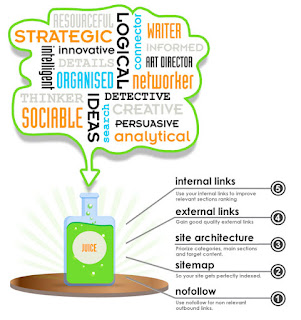History and Evolution of Search Engine Optimization
HISTORY AND EVOLUTION OF SEO
From Back-rub to Google
Web-crawling/Spidering
A web-crawler is an automated script which browses the World Wide Web in a methodical, automated manner. This process of browsing the internet is known as Web crawling or spidering. Web crawlers are referred to as google bots, google robots and spiders.
Indexing
Google analyses the contents of a webpage by going through its images, videos and other information in order to understand the page better. This information is stored in the Google Index. This process is known by the name Indexing.
Webmaster
Webmaster refers to a person who has the code and access to the data of a particular website which he or she maintains. The webmaster can access this data to edit it accordingly.
Website Optimization
It refers to the process of using tools, experiments and advanced strategies to to make the performance of the website better.
Cache
A cache is a reserved storage platform that collects temporary data to help browsers, websites and apps load faster. It can be also referred to as a snapshot of a webpage that creates and stores after it indexes a page.
Spamming
It is using messaging structures to ship an undesired message/ unsolicited mail to massive no. Of recipients for serving the cause of commercial advertising by using phishing, plagiarism and so forth. When search engines find out a spam on a website, that web site is penalized.
Content(niche)-specific
Link-Specific
Keyword-stuffing
Black Hat SEO technique
It is an illegal and disapproved practice through which a page's rating is uplifted. As it is against the ethical procedure, the pages following this technique will be blacklisted by google.
White Hat SEO technique
This is a legal and approved technique by which the ranking of the page is increased.
Passing the juice/Link juice
Algorithm changes made by Google
Meanwhile, google made many modifications in the algorithm which wasn't identified due to the common addition and elimination of the changes
For instance, Google AdWords and Google AdSense services were launched in 2000. Google AdSense is for publishers and AdWords is for advertisers. Ads can be displayed in web sites and generate sales through AdSense service. On the opposite side, AdWords enables to display your ads on the Google search results pages, partner websites and all the Google display network.
One of the primary characteristic of AdWords is that, you're liable to make a payment only when a person clicks on your advertisement (pay per click). So essentially the money deposited for Ads in AdWords are invested in AdSense. An AdSense user should try to increase their ranking in order to generate income. But an update given by google anytime will lead to a drop in the ranking and thereby this affects the revenue negatively. The revenue from AdSense is indirectly the commission earned by Google. So, a drop in revenue of AdSense additionally affected google income as well. Hence the updates were not identified and eliminated in due course of time.
Changes reflected in the years 2009-2010
By 2009, there have been many updates like the Search algorithm Update(February), Webmaster tools, Search algorithm update(named Caffeine) and a few updates is the search categories. As the end result of these upgradations, google became more of a personal assistant than a mere search engine.
They had added customized search end result wherein your entire search result could be saved. Features for calculating, for apprising about IP address, climate update features etc. Most importantly, web page ranking in keeping with users interactions and greater involvement became additionally introduced. Ranking here changed into the idea that if the person is happy with the website, he/she is meant to spend greater time on it.
By 2010, Google put forth an update called the social media signal update. A webpage is ranked high when it's shared in the social media. Eventually the site owners started out to depend more on social media for advertising and marketing and for that reason the quantity of stocks went up leading to greater interactions through social media. This popped up the ranking. So google recommended a brand new characteristic i.e., ranking is multiplied only when the webpage shared on social media systems get good reach and public interaction through likes, shares and comments.











Comments
Post a Comment